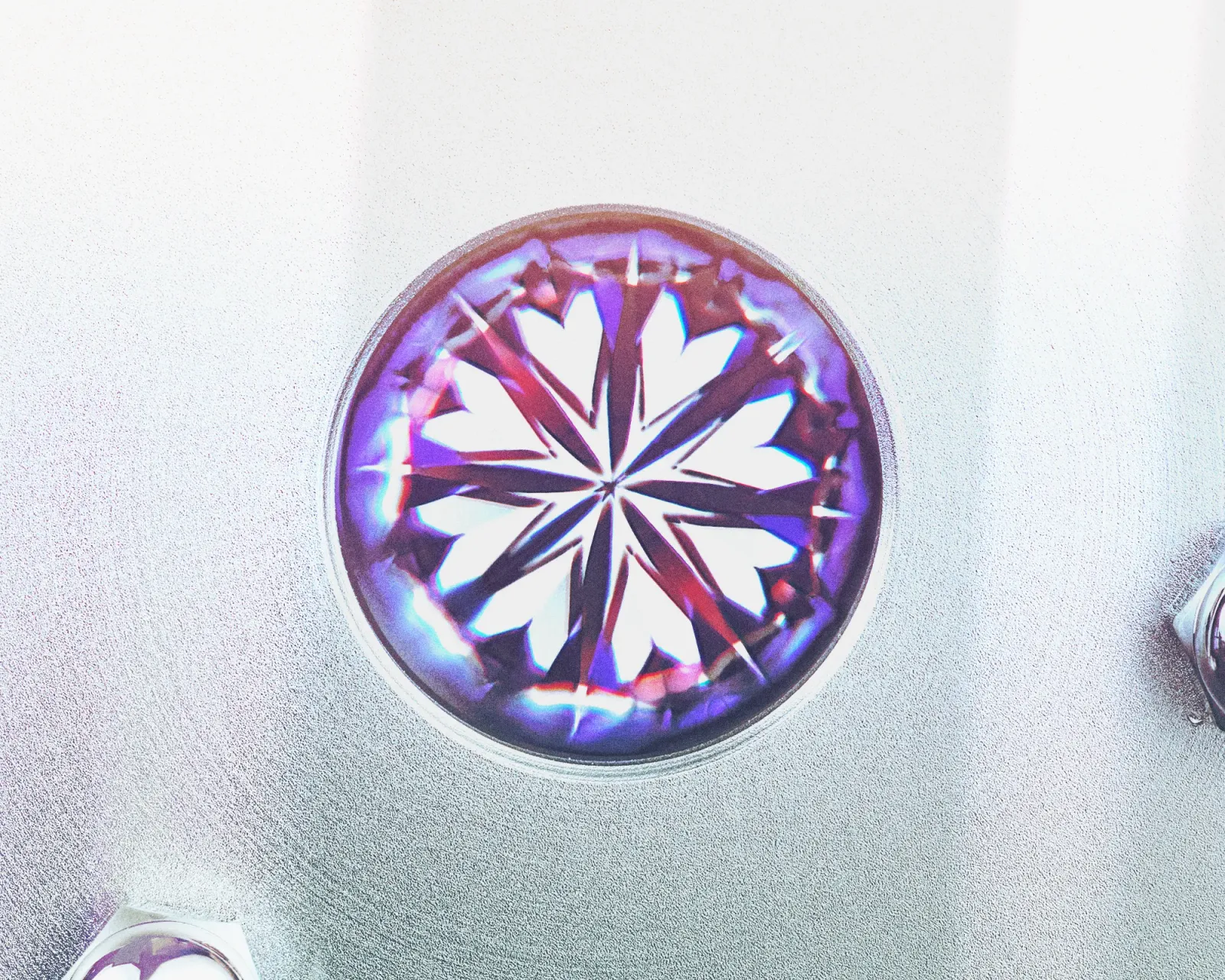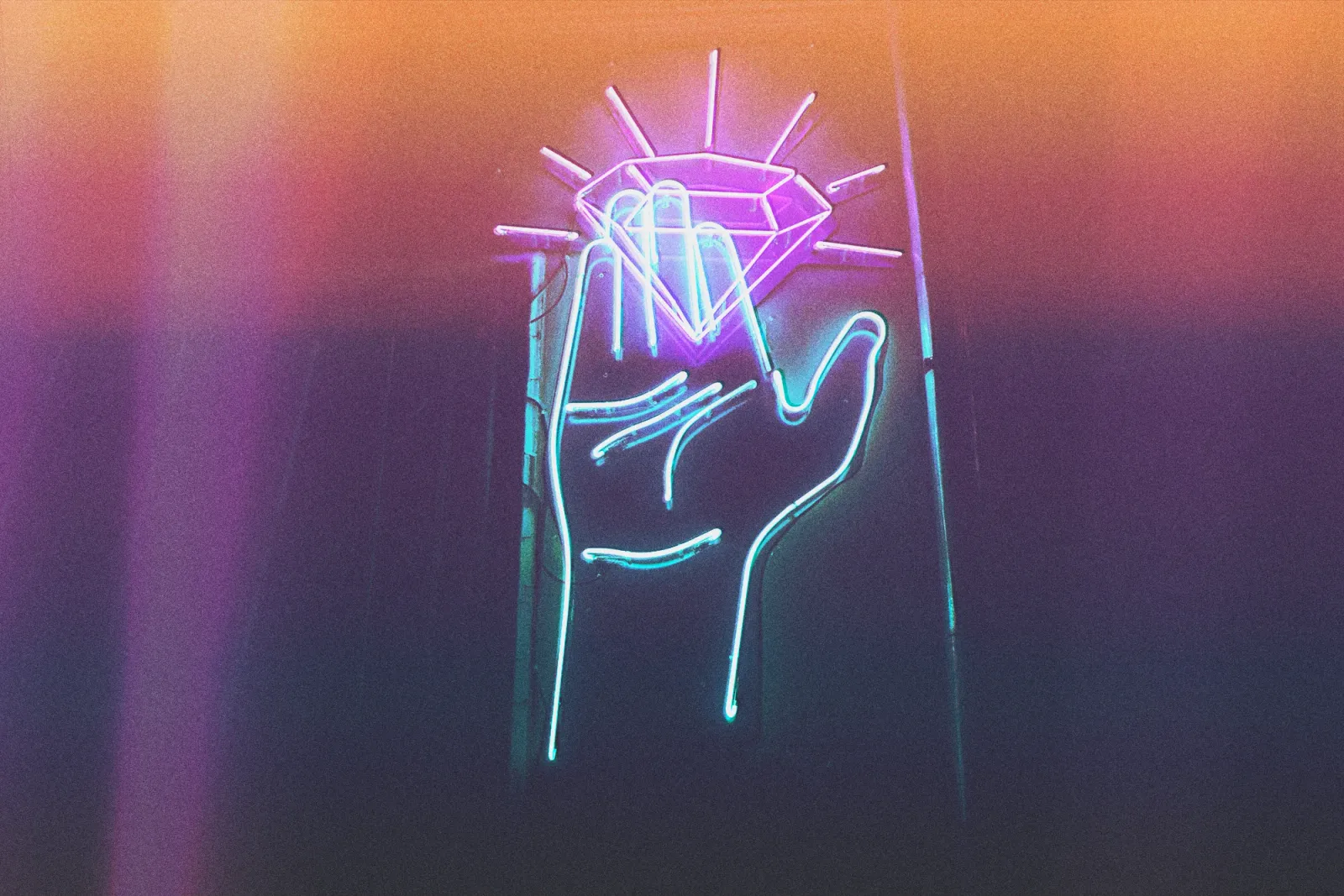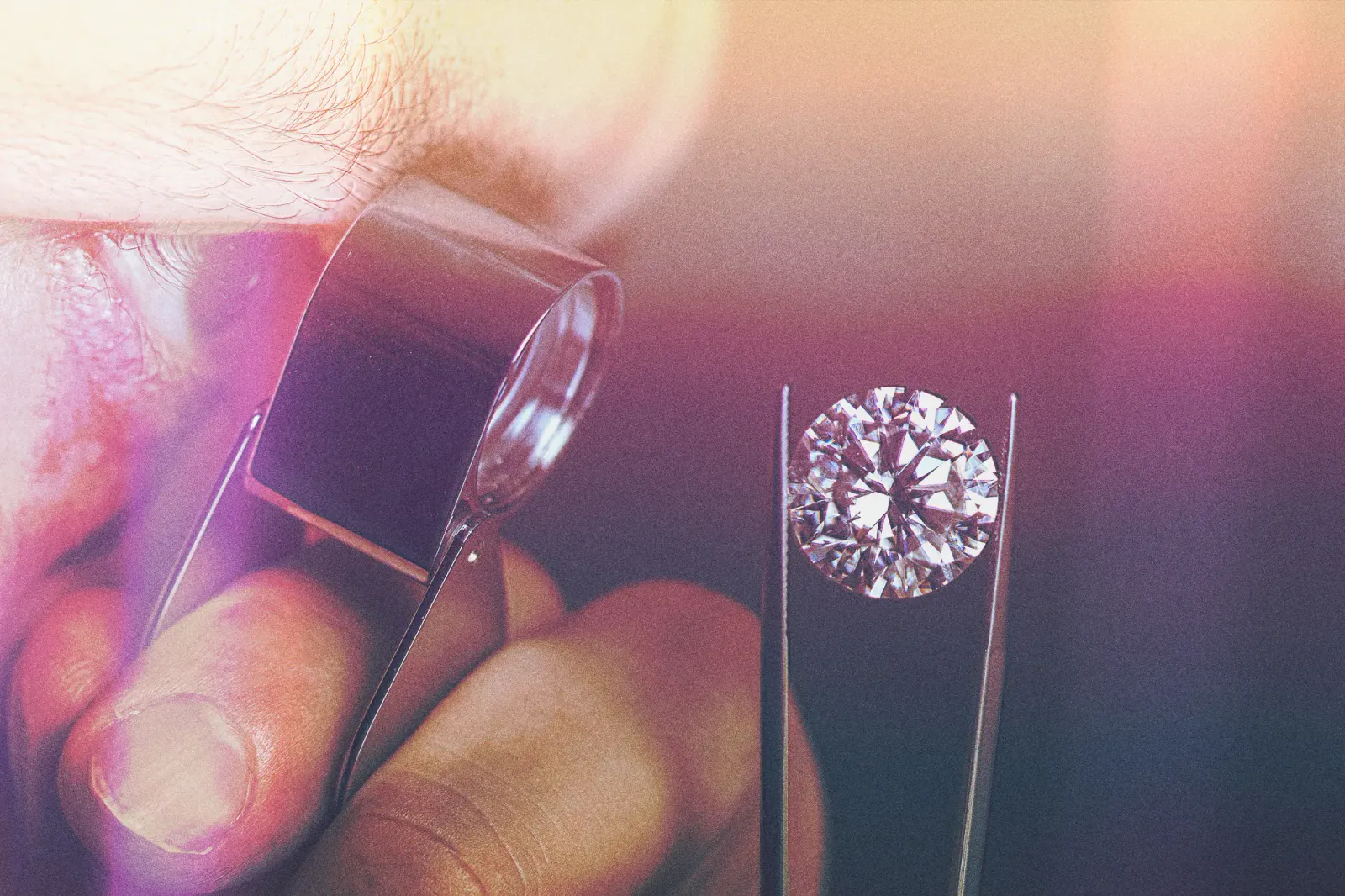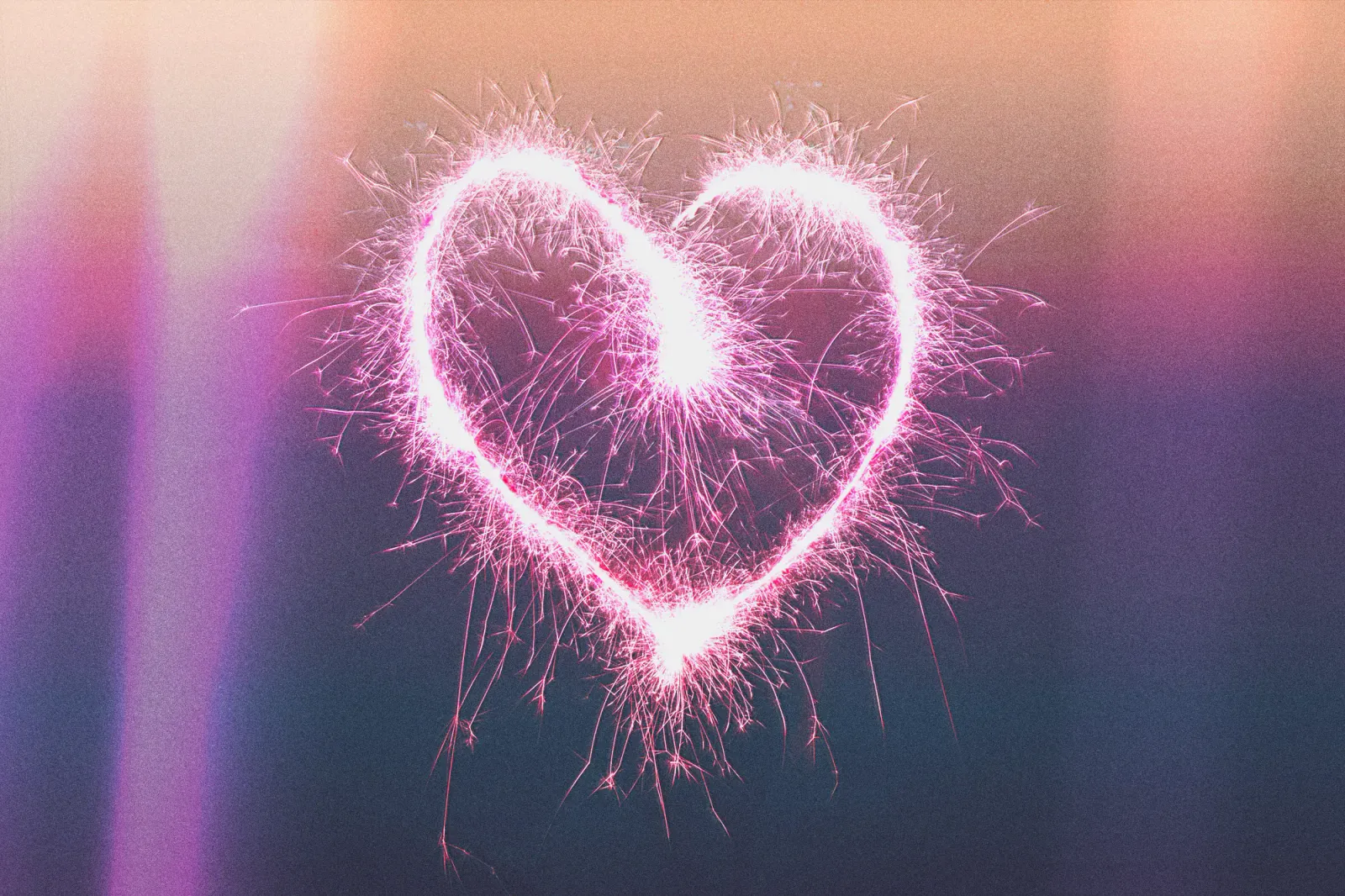Diamonds assigned Hearts and Arrows status carry both prestige and a premium price tag. They are a super-ideal cut which only a highly skilled diamond cutter can achieve. But the Hearts and Arrows label is not a guarantee that you're getting value for your extra dollars. Here we guide you through what a Hearts and Arrows diamond actually is, what it adds to a diamonds' beauty, and what to look out for when buying one.
What is a Hearts and Arrows diamond?
As you start to compare different diamonds, you will notice patterns of light and dark within them. This is the reflection of light between the facets, and sometimes, when looking at the top of a diamond you will see what look like dark arrows, with the arrow shafts pointing out from the center of the diamond across the table, and arrowhead shapes pointing across the crown. Viewed from the top, a very skillfully cut diamond will display a distinct, kaleidoscopic pattern of eight symmetrical arrows.
Back in the 1980s diamond cutters in Japan noticed that when viewed through a special scope, these patterns of arrows were clearer; they also discovered that when the diamond was viewed upside down, a pattern of eight hearts could be seen between the arrow shafts. The concept of Hearts and Arrows was born.
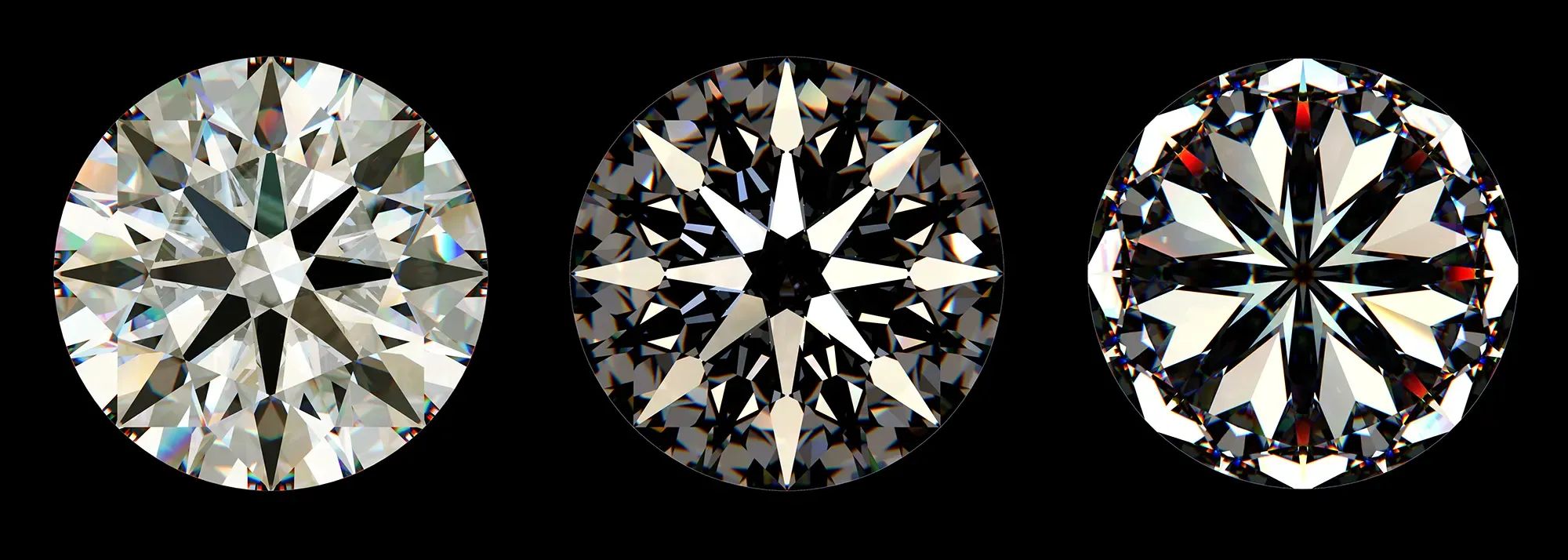
The distinctive hearts and arrows pattern is not present in just any diamond. To achieve this pattern requires an incredible level of cutting symmetry which is also referred to as 'optical symmetry'. This level of symmetrical measure goes beyond that which is on a diamond report. When a diamond is graded, it is the external symmetry of the diamond - how well facets meet and are aligned on a diamond's surface - that is being evaluated. Optical symmetry, sometimes called 3D symmetry, is an assessment of the internal symmetry: how well the internal alignments reflect and return light. So, optical symmetry will not appear on a diamond report because it goes above and beyond what is required for top cut grades of Excellent or Ideal. You will therefore sometimes see Hearts and Arrows diamonds referred to as super-ideal.
Why buy a Hearts and Arrows diamond?
When crafting a super-ideal diamond, the overall aim for the diamond cutter is perfect light play and beauty; the aim is not the starburst of hearts and arrows. This patterning is a side effect of achieving optical symmetry: a side effect which happens to have wonderfully romantic connotations. Optical symmetry means a facet is aligned with another on the opposite side of the diamond in 3D space. This level of perfection in the cut, design and finish of the diamond is to enhance and maximize the light performance of the diamond to extraordinarily high levels.
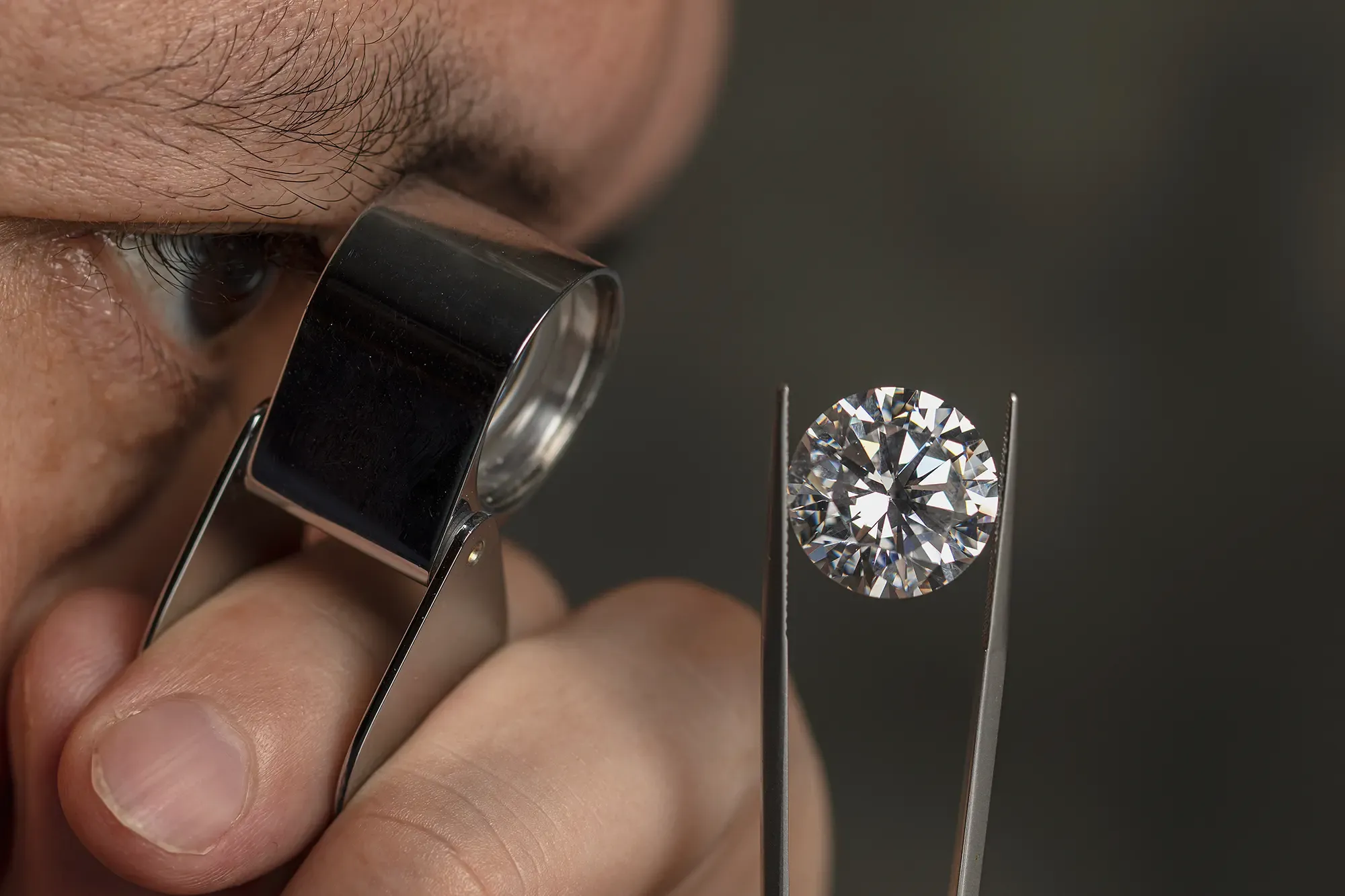
And light performance is what we look for in a diamond. It's where we see its beauty. A Hearts and Arrows diamond will have fabulous brilliance. The facets, cut to super ideal standards, will have contrast patterning (patterns of light and dark) which offer stunning sparkle. Because the facet alignments achieve 3D symmetry, light is bounced around the diamond to stunning effect, with virtual facets optimized for scintillation. The super-ideal cut of Hearts and Arrows diamonds makes for bigger, better virtual facets, reflecting light for a diamond more lively in appearance than one which falls into 'excellent', 'triple X' or 'ideal' cut grades, and sparkle will be evenly distributed across the diamond.
Not all Hearts and Arrows diamonds are equal
Even among these precision cut diamonds there are differences in the quality of the cut. If you're looking for the best of the best when it comes to Hearts and Arrows diamonds the differences can be very difficult to spot. Diamonds need to be in exact alignment to view the patterning accurately - any tilt of the diamond can make the pattern appear skewed. These are some of the things to look out for:
- It may sound obvious, but all eight hearts and eight arrows.
- Overall symmetry. For example one side of a heart should be a mirror image of the other side of it.
- The hearts and arrows should each be the same size and shape, and they should each be of the same intensity. No one heart or arrow should appear bolder.
- Looking at the hearts pattern, the chevrons should all appear equal, with the point of each heart sitting neatly into the chevron, with an even gap between the two.
- The cleft of each heart should be neat, not forming a split down into the heart.
- Looking at the arrows pattern, the arrow heads need to be aligned to the arrows, and the point of each arrow head should meet the diamond's girdle.
There is no reliable, agreed upon certified grading for Hearts and Arrows diamonds, so purchase from a company that is open about how they grade and define a Hearts and Arrows cut. They should be happy to provide you with data and imaging to back up their claims. This means Hearts and Arrows images as well as ASET and Ideal Scope images.
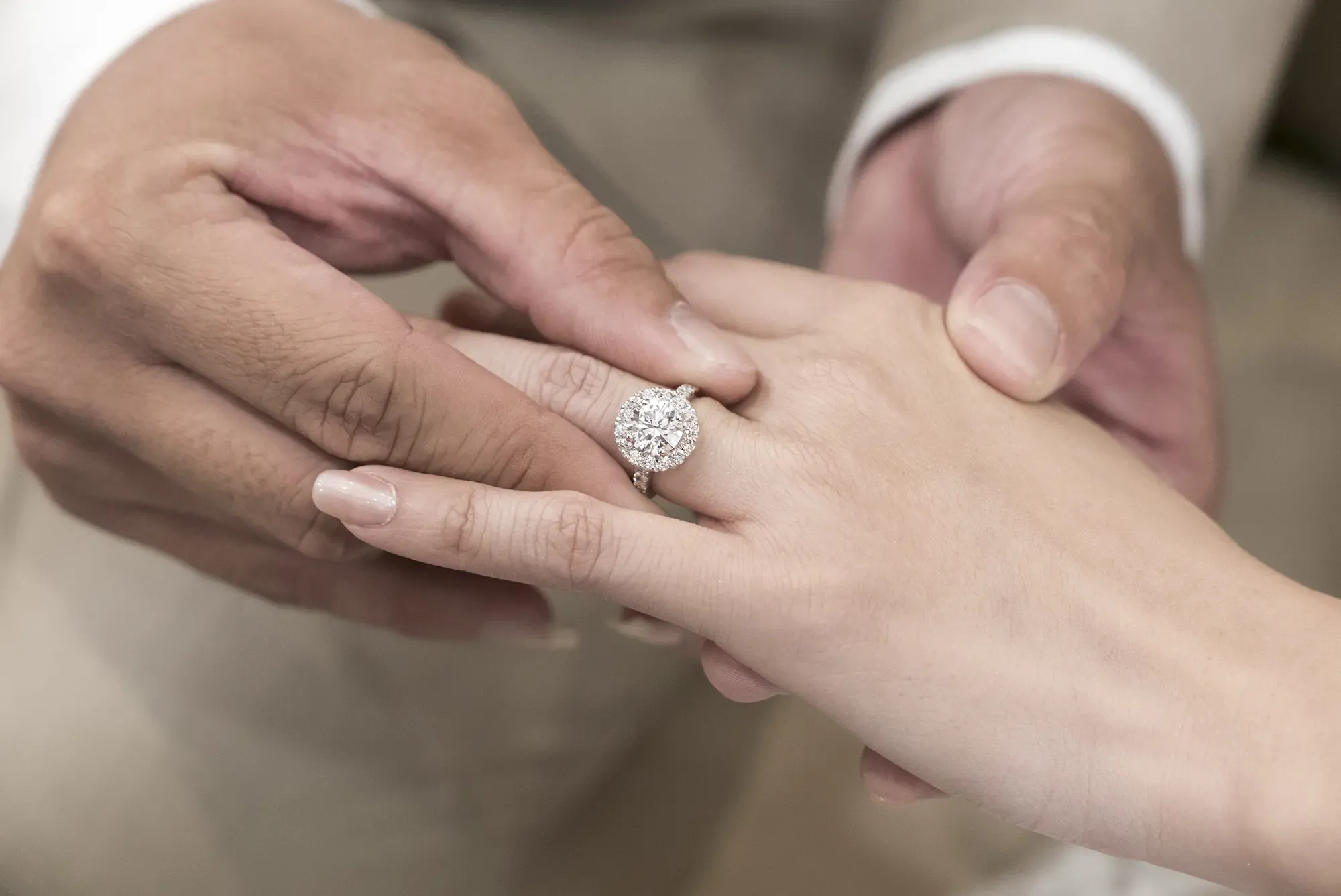
The fact Hearts and Arrows diamonds are sought after has created a market that brands can use, even exploit, to their advantage. Some label diamonds as Hearts and Arrows when they don't meet the standards, and some have come up with their own branded cuts that create Hearts and Arrows patterning but without also achieving super ideal standards. So buyer beware! Whilst on occasion these cuts can produce a beautiful diamond, as said above, in a true Hearts and Arrows diamond the patterning is a bi-product of outstanding craftsmanship, it's not that cutting to create hearts and arrows means you get a diamond of super-ideal quality. But by asking the right questions and getting the information from the vendor you'll find the Hearts and Arrows diamond that's right for you.
Paying more for Hearts and Arrows diamonds
Hearts and Arrows diamonds are cut with a great deal of skill and craftsmanship to achieve super-ideal standards and reveal the inner beauty of the diamond to stunning effect. This requires skill and more time, which of course, costs more. It's also a process which loses more of the rough diamond, so again adds cost. A true Hearts and Arrows diamond should deliver fabulous brilliance (white light return) and scintillation (sparkle).
This reputation for next-level beauty means vendors can charge a premium, and that premium varies widely. So we'd certainly recommend doing your homework and buying from a trustworthy vendor.

